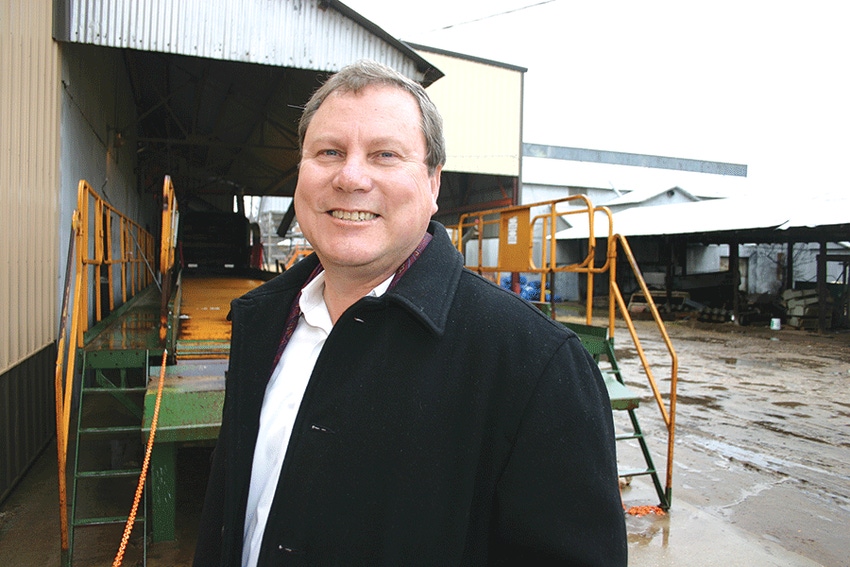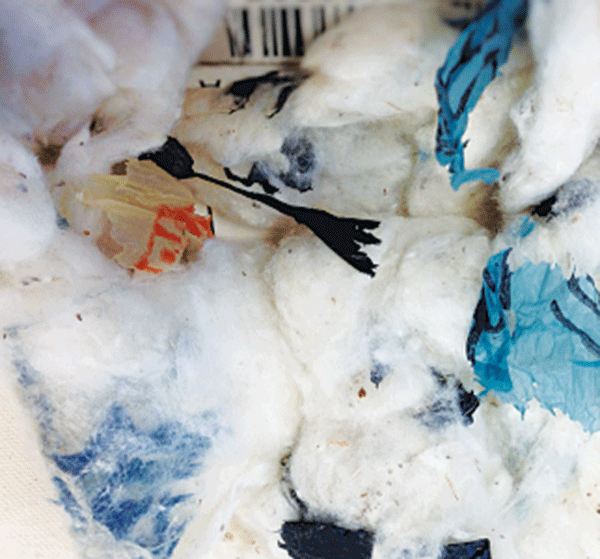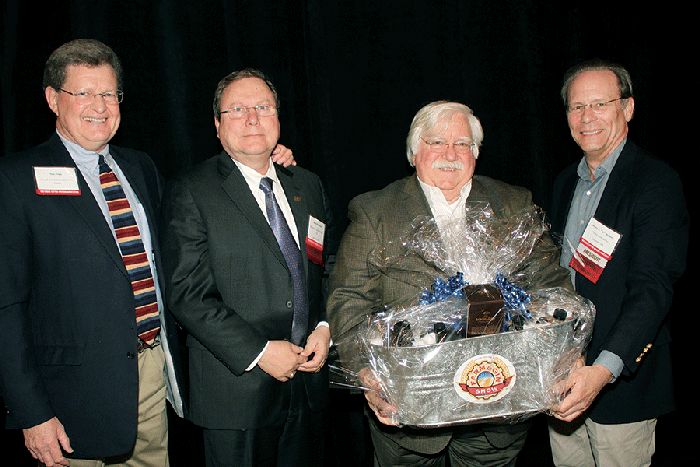
“I know you’re tired of hearing about it,” David Blakemore told Southern Cotton Ginners Association members at their annual meeting at Memphis, “but it’s important: plastic contamination poses a very real threat to our reputation for having the cleanest cotton in the world.”
As the new president of the National Cotton Ginners Association, Blakemore, a Campbell, Mo., ginner, says the industry is “very concerned” about the problem. “During the past four years, efforts have been initiated to train gin employees on proper removal of round module wraps — and these efforts will continue until contamination is no longer an issue.”
The three USDA cotton ginning laboratories have been working on various methods to detect and remove plastic contaminants before they get too far along in the ginning process, he says, but “we’re a long way from any of these research efforts yielding a practical system for removing plastic at the gin. So, the best defense is to make sure that these contaminants don’t get into seed cotton.”

"The best defense is to make sure contaminants don't get into seed cotton," says National Cotton Ginners Association President David Blakemore.
The National Cotton Council website offers a number of resources about preventing contamination, Blakemore says, and the NCGA has a DVD “that should be viewed by all gin employees who are involved in opening round modules.”
He also pointed out that black plastic used in production of vegetable and melon crops can be a source of contamination if left in the field and cotton follows.
MAKE CUSTOMERS AWARE OF PROBLEM
“The elimination of any and all forms of plastic should include a frank discussion with your customers,” he told the ginners. “They have got to do a better job of removing plastic from their fields. At harvest, if plastic gets into the middle of a module and makes it to the gin stand, research has show that there is a strong possibility it will end up in the bale
“Cotton producers — not just ginners — must become more involved in helping to eliminate these materials and reach our industry’s goal of zero contamination.”
NCGA continues to support research, Blakemore says, that addresses cotton quality issues and concerns by working with the USDA ginning laboratories and Cotton Incorporated.
At “the top of the list” of ginner concerns for research to support cotton quality and gin efficiency, are leaf hairiness, seed coat fragments, seed size, and seed loss from ginning small seeded varieties.
At ginning conferences at the recent Beltwide Cotton Conferences, a discussion centered on issues associated with ginning smaller seeded varieties and the lost revenue as a result of fewer pounds of seed per bale.
“There is no doubt that with the increased capacities of modern gin machinery, we have a desperate need for better communication between researchers, the ginning industry, and gin equipment manufacturers,” Blakemore says.
Last year, the NCGA and the National Cotton Council cooperated on the NCC’s appropriations request to include language that emphasized the importance of the cotton ginning labs, he says.
COTTON GINNING LABS IMPORTANT
“The House Agriculture Appropriations Committee has directed that an additional $1.5 million be allocated to the facilities, and while these funds are not included in the current continuing resolution, we’re hopeful that they will be included when Congress takes up the budget. The gin labs work to improve lint quality and to increase ginning efficiencies, both of which add to the producer’s bottom line.”
With three potential vacancies at the gin labs — Dr. Rick Byler, director of the Stoneville, Miss., facility has announced his retirement — and pressures on the federal budget, “We need to monitor this closely to insure we don’t lose important research positions,” Blakemore says. “The relationships our ginners have had with our outstanding scientists has been fruitful, and to overcome this research void NCGA will be working closely with the USDA to insure that we have a technology coordinator and that we have three viable ginning laboratories.”

Dr. Rick Byler, second from right, director of the USDA Cotton Ginning Laboratory, Stoneville, Miss., was presented a retirement gift at the annual meeting of the Southern Cotton Ginners Association. From left are Tim Price, SCGA executive vice president; David Blakemore, National Cotton Ginners Association president; and Tri Watkins, SCGA outgoing president.
He cited the cotton ginner certification program offered in ginner schools at the three ginning labs. “It is vital that our gin employees be well-trained, and these schools have been an asset in filling this need for competent workers. With the assistance of the USDA and gin equipment manufacturers, NCGA has been able to continue providing timely topics for the schools’ basic curriculum and continuing education courses. Our goal has been to include topics that are equally important to our certified ginners and gin managers.”
Last year, Blakemore says, 246 students took part in the gin schools, evidence that “many gins are making this educational endeavor a high priority.”
Among those completing the demanding curriculum for certification were three Mid-South ginners: Ronnie Clester and Justin Williams, both at 4-Way Gin Company, Senath, Mo.; and Edward Smith, Jr., McNutt Gin Company, Boyce, La. “We congratulate them on their outstanding accomplishment,” Blakemore said.
About the Author(s)
You May Also Like




